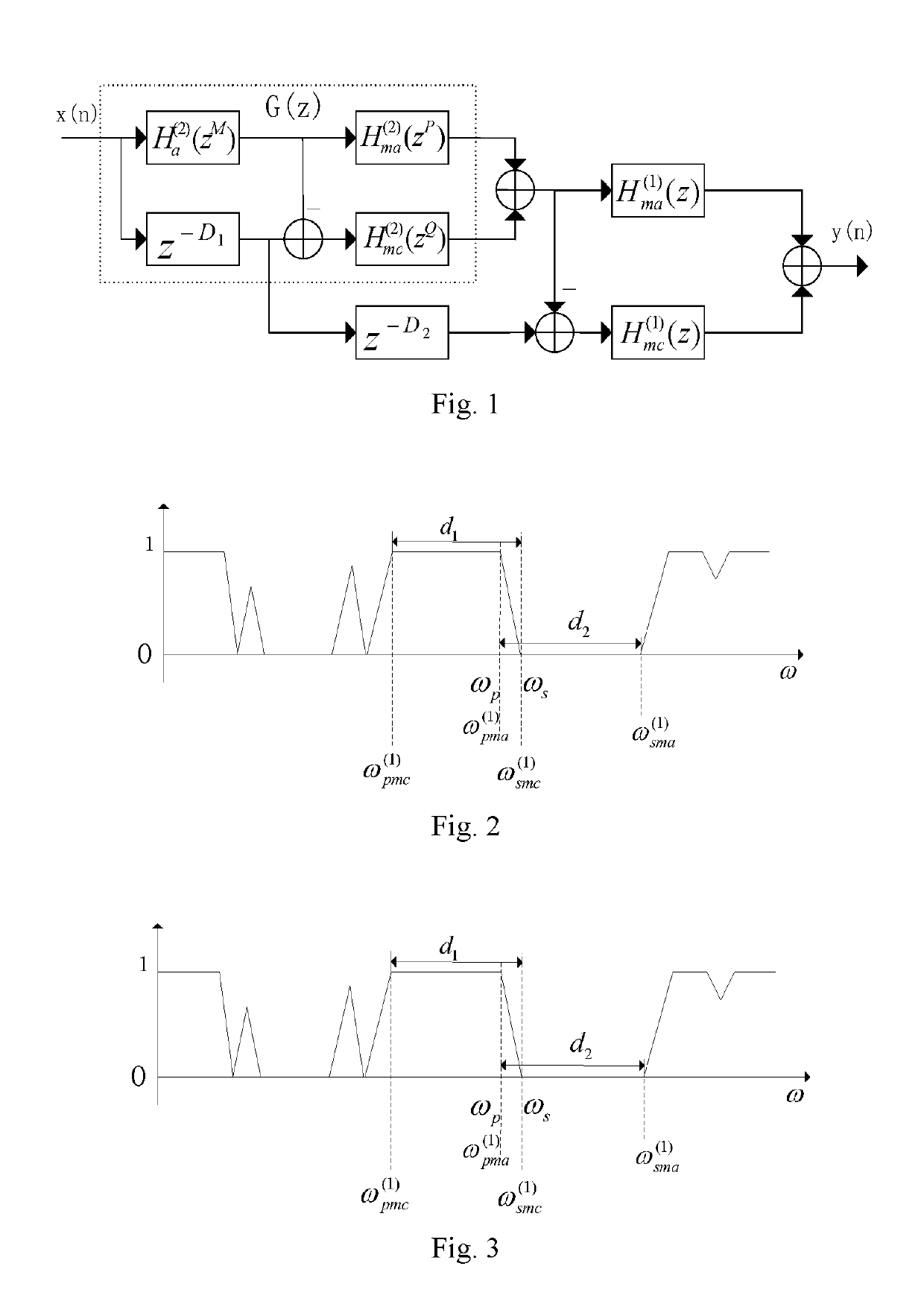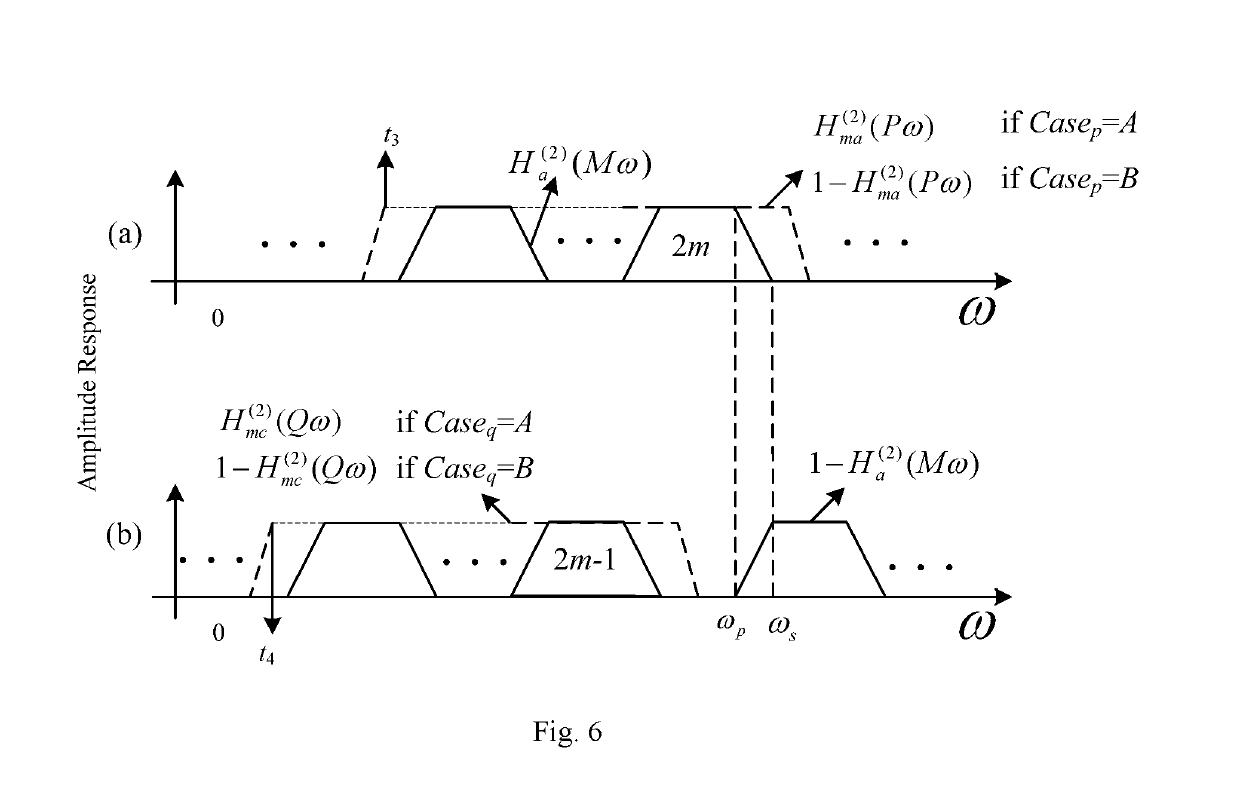Method of two-stage FRM filter
a design method and filter technology, applied in the direction of impedence networks, digital technique networks, electrical equipment, etc., to achieve the effect of reducing the complexity of narrow-band fir filters and reducing power consumption
- Summary
- Abstract
- Description
- Claims
- Application Information
AI Technical Summary
Benefits of technology
Problems solved by technology
Method used
Image
Examples
example 1
[0156]The specific specifications of a filter having an extremely narrow transition band are as follows: ωp=0.6π, ωs=0.602π, δp=0.01, δs=0.01. By using the present design method, the final results are as follows: Na=28, Nma2=20, Nmc2=16, Nma=17, Nmc=29. The three interpolation factors M, P, Q are 69,9,9, respectively, which fall into Case B type: Casep=B, and Caseq=B. The number of multipliers is 59 with a group time delay being 1070.5. The passband and stopband ripples are 0.01 and 0.00999, respectively. Comparison of results of the method of the present invention with those of other existing methods is as shown in Table IX.
[0157]
TABLE IXResults of Designing Filter Using Various Methods inExample 1 And Comparison ThereofTotalGroupNumber OfTimeMethodMultipliersDelayConventional921105two-stage FRMSFFM-FRM case A861638.5SFFM-FRM case B842150.5Serial-masking FRM831016Non-periodical FRM551214Improved method591070.5
[0158]As can be seen from Table IX, when compared with the conventional t...
PUM
 Login to View More
Login to View More Abstract
Description
Claims
Application Information
 Login to View More
Login to View More - R&D
- Intellectual Property
- Life Sciences
- Materials
- Tech Scout
- Unparalleled Data Quality
- Higher Quality Content
- 60% Fewer Hallucinations
Browse by: Latest US Patents, China's latest patents, Technical Efficacy Thesaurus, Application Domain, Technology Topic, Popular Technical Reports.
© 2025 PatSnap. All rights reserved.Legal|Privacy policy|Modern Slavery Act Transparency Statement|Sitemap|About US| Contact US: help@patsnap.com



